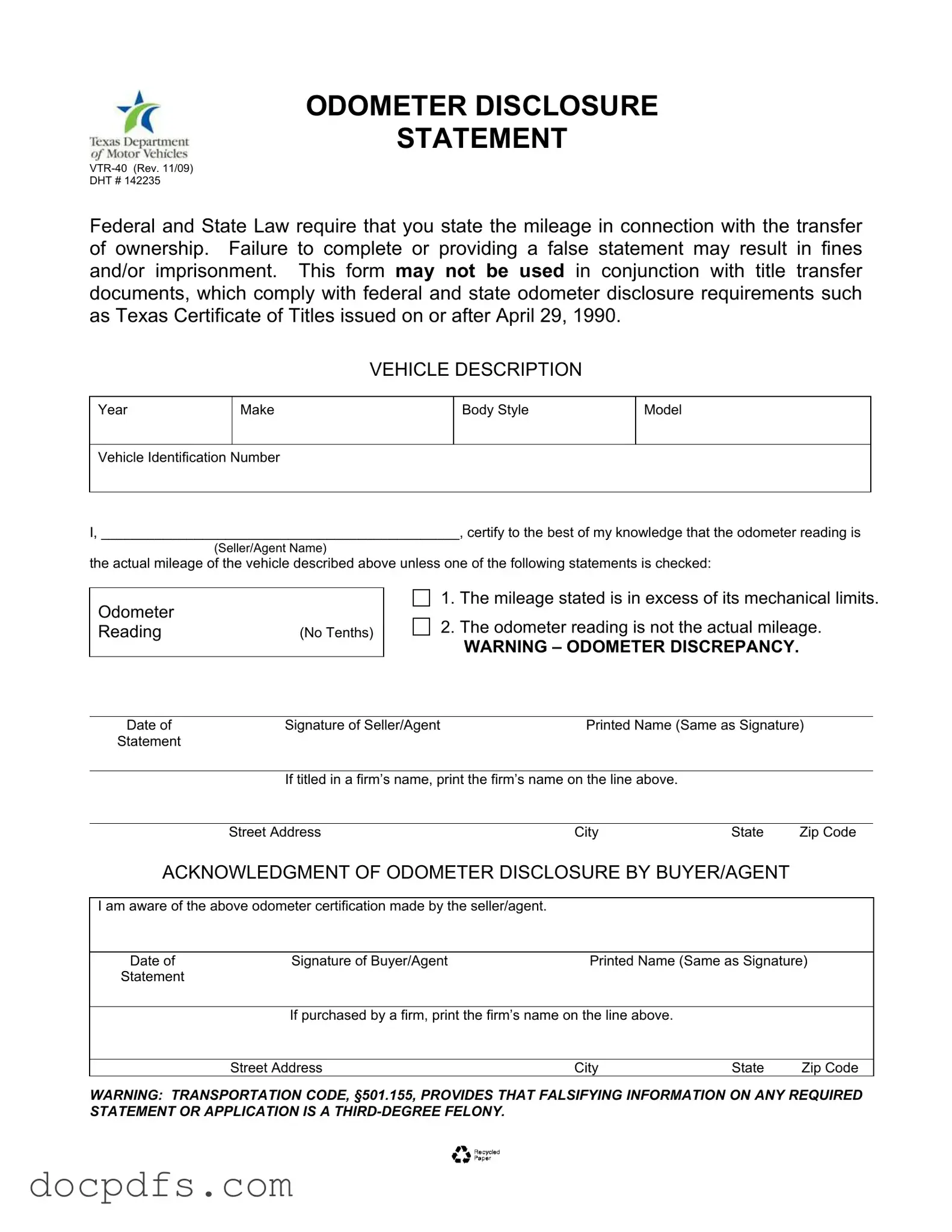When engaging in the sale or transfer of a vehicle in Texas, understanding the Texas Odometer Statement form is crucial for both buyers and sellers. This form, officially known as the Odometer Disclosure Statement (VTR-40), serves as a legal document that ensures transparency regarding the vehicle's mileage. It is essential for compliance with both federal and state laws, which mandate that the actual mileage be disclosed at the time of ownership transfer. Failing to complete this form accurately or providing false information can lead to significant consequences, including fines or even imprisonment. The form requires specific details, such as the vehicle's year, make, body style, model, and Vehicle Identification Number (VIN). Additionally, the seller must certify that the odometer reading reflects the actual mileage, unless they indicate otherwise by checking one of the provided statements regarding mechanical limits or discrepancies. Buyers are also required to acknowledge this disclosure, ensuring that they are aware of the odometer certification made by the seller. Given the legal implications of falsifying information, it is vital for all parties involved to understand the importance of this document in the vehicle transfer process.
